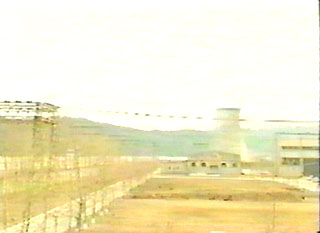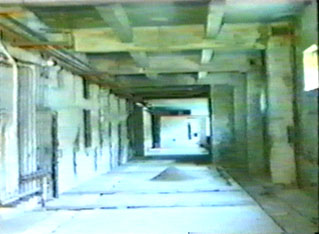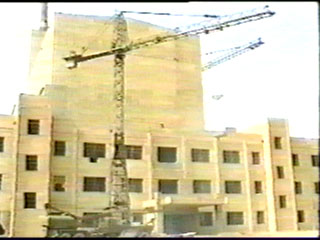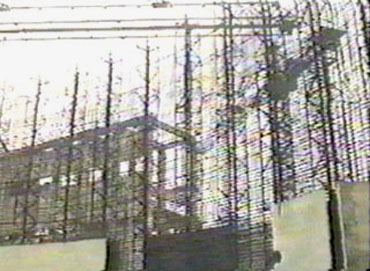|
Images
(click for large view)
|
Facility
|
North Korean
Declarations
|
Unresolved Issues
|
|
|
1) Small IRT Research Reactor and associated "hot cells" supplied by the Soviet Union; reactor placed under IAEA safeguards in 1977.
|
Admitted that in 1975 it separated minute amount of plutonium in these hot cells. The plutonium was produced in the IRT reactor.
|
North Korea has not provided written records to substantiate its claims, raising suspicions that it separated more plutonium from the reactor since then. Worst-case assessments conclude North Korea could have separated up to 4 kg of plutonium produced in this reactor.
|
  
|
2) Gas-Graphite Reactor (25 megawatt-thermal (MWt)) at Yongbyon. It can produce on average enough plutonium for one bomb per year.
|
Claims that the reactor is for electricity production (5MWe). Claims that the initial core of fuel was unloaded in May - June, 1994
|
The International Atomic Energy Agency (IAEA) was denied the ability to inspect this fuel to determine whether or not this core was indeed the first one. Many suspect that the North unloaded most or all of the first core in 1989, which would have resulted in about 7-10 kg of weapon-grade plutonium in spent fuel. The core currently being unloaded contain in total approximately 25 kg of weapon-grade plutonium.
|
 
|
3)"Radiochemical Laboratory" at Yongbyon. Large plutonium separation plant, composed of two separation "lines," parts of which are operational.
Declared that it separated about 100 g of weapon-grade plutonium on one occasion in March 1990 from damaged fuel rods that had been removed from the nearby 25MWt graphite reactor.
|
After analyzing radioactive samples taken from equipment and nuclear waste at the facility, the IAEA concluded that North Korea had separated more plutonium than it declared – perhaps enough for a bomb or two. However, North Korea has prevented IAEA inspectors from arriving at a firm estimate of the amount of undeclared plutonium.
|
|
|
4) Two nuclear waste sites at Yongbyon. U.S. satellite photos show two camouflaged nuclear waste sites. One is a building with a hidden basement that is connected to the Radiochemical Laboratory by a trench that might contain pipes.
|
Denies that these are nuclear waste sites; instead insists that they are military sites exempt from IAEA inspection
|
The sites might contain waste leftover from separating plutonium. Because of the chance of finding new evidence of the amount of separated plutonium, the IAEA wants to inspect these sites and take samples of any waste found there.
|
|


|
5) Gas-Graphite Reactors (under construction), including a 200MWt reactor at Yongbyon and a 600-800 MWt reactor at Taechon. The 200MWt reactor could be completed in a few years and could produce enough plutonium for 8 to 10 bombs. The larger reactor is also scheduled to be completed within the next several years, but will probably be dedicated to electricity production.
|
Plans to finish these reactors to produce electricity.
|
If completed, these reactors could produce large quantities of weapon-grade plutonium, enough for a sizable nuclear arsenal. Since the irradiated fuel from this type of reactor is not generally considered suitable for long-term storage or geological disposal, the North might argue that it has to separate the plutonium for health and safety reasons. The Radiochemical Laboratory, if finished, is believed to have the capacity to separate all the plutonium from these reactors.
|
|
|
6)Weaponization activities or facilities.
|
Denies having done any weaponization activities.
|
North Korea may have the capability to make nuclear weapons, but few indicators of such activity have been found
|
